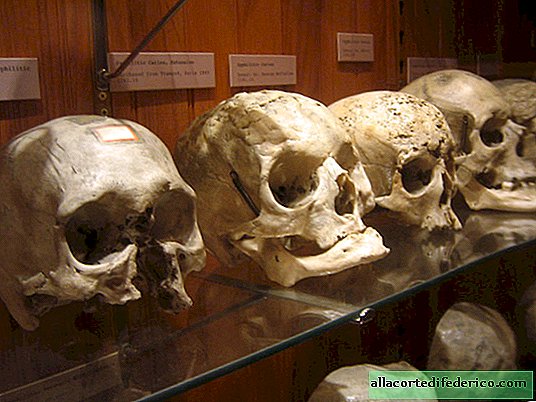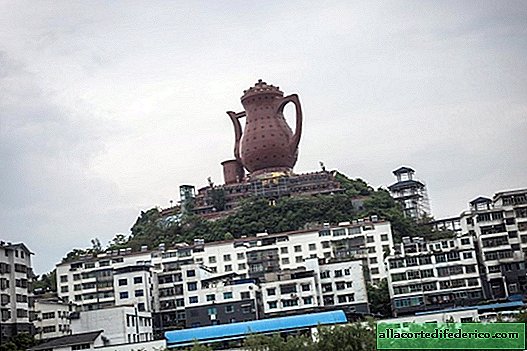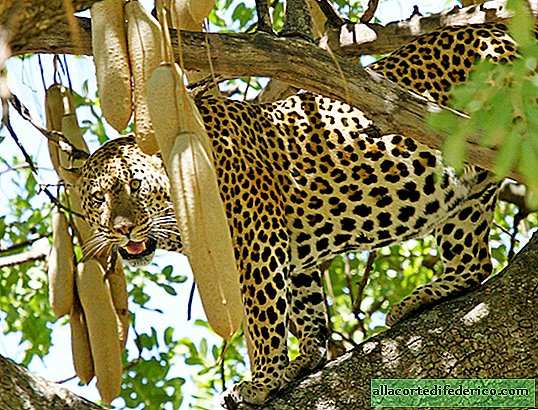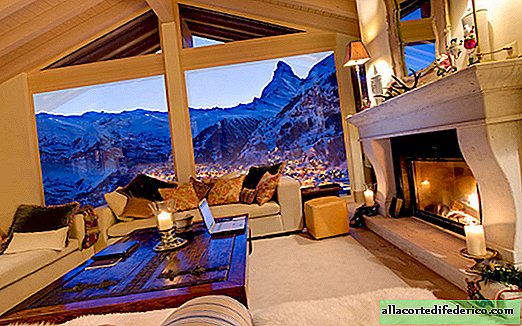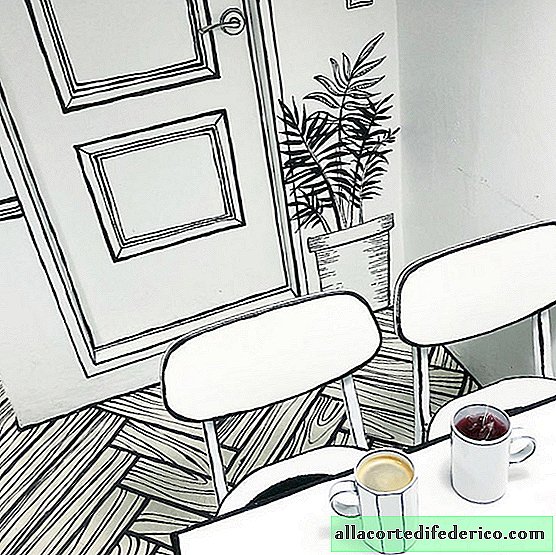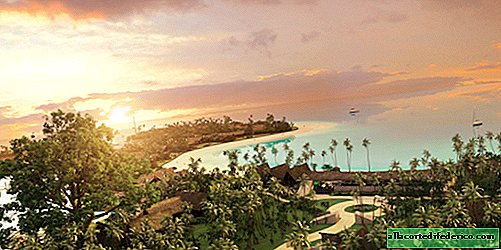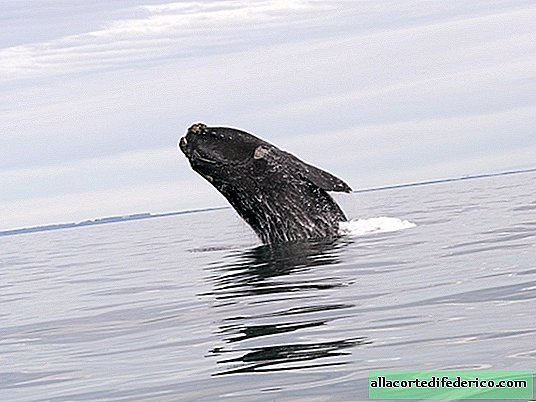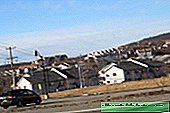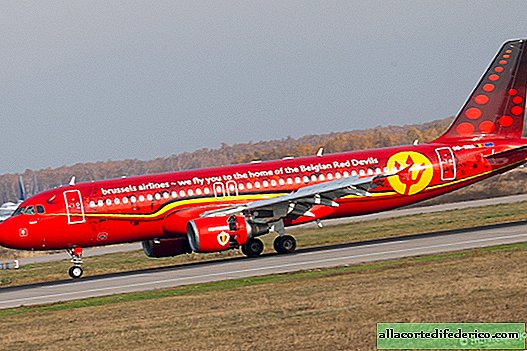Belomorsk biological station
Do you like the works of Herbert Wells, as I love them? Especially in my youth I liked his novel about a doctor who turned animals into beastmen on a distant island in the Pacific Ocean. Then I really wanted to visit some scientific base in a place remote from civilization. Dreams come true not only at Gazprom - last summer I visited this place. And it was all as I imagined: the rocky seashore, impenetrable jungle of the forest, a long journey through the water, animals and ... scientists. Thank God, not crazy and cruel, as in that novel, but talented, hospitable and dedicated to their work.
Welcome to the White Sea Biological Station!

BBS, as the biostation is called in abbreviated form, is located in Karelia, on the shore of the Chupin Bay of the Kandalaksha Bay of the White Sea (66 ° 20.230'N; 33 ° 38.972'E), 30 km south of the Arctic Circle, on Cape Kartesh. This is a marine hospital of the Zoological Institute of the Russian Academy of Sciences, where they study the life of White Sea organisms. Since its foundation in 1957, the biostation has become a modern marine laboratory, where they conduct research, organize excursions for schoolchildren and students, and monitor the state of marine ecosystems. And in 2008, the station became part of the European Community of Marine Scientific Institutes and Stations (MARS).

You can only get to the biostation by sea, from the village of Nizhnyaya Pulonga, which can be reached by car from Chupa. Early in the morning we phoned once again with the captain of a small boat, and he said where he would be waiting for us. We set off to look for this pier, lost on the Karelian shores.
Lower Pulonga turned out to be a picturesque place from which we simply could not tear ourselves away. The calm waters of the Chupin Bay of the White Sea, small islands overgrown with Karelian pine, marvelous dawn colors of the North ... We did not find a boat in Pulong, the captain said that we should go further along the forest road, which should lead us to another pier.

Having pretty much gone astray, we nevertheless left for the open shore ...
There they found the boat "Alexander" ...

The path through the water of the Chupin Bay to Cape Kartesh takes almost 2 hours.
The first hour you can’t get off the sides - beautiful islands, a blue beckoning as clear as a tear of the White Sea, alluring Karelian landscapes ...

Finally, the diesel speed falls, the boat makes a maneuver and turns perpendicular to the shore. At the heading, the BBS Kartesh berth, hidden from the north winds in a cozy rocky cove.

The fleet of the biostation is two research vessels, Professor Vladimir Kuznetsov and Belomor, plus a bunch of small motor and rowing boats and boats.

The bay is very quiet and beautiful.
Until they come for us, we run along the walkways, looking around. Everywhere is interesting.

But what is it? Dead fish off the coast of a biostation? What are they doing here? In fact, this is just complementary foods for beluga dolphins, which sometimes swim here.

And here is our main guide for the biostation - Lyudmila Pavlovna Flyachinskaya, senior researcher at the Zoological Institute of the Russian Academy of Sciences, candidate of biological sciences.
Lyudmila Pavlovna has been studying the larval development of bivalve mollusks in the White Sea for many years. She is one of the old-timers of the base.

This is Crooked Lake, where the inhabitants of the biostation take drinking water, and also make fences for all kinds of research.

Its waters almost immediately connect with the sea waters of the bay. Once the lake was part of the sea bay, but as a result of a tectonic shift, this land area rose and it was filled with groundwater. Now the lake repays its debt to the sea with such a short stream. In the past, river pearls were found in it, but now they are no longer here. By the way, it was on BBS that the symbiosis of salmon and this pearl mollusk was discovered, which was previously considered a parasite of this species of fish. Being on the body of salmon, it secretes a special hormone, without which the fish can not spawn.
Rail trolley, with the help of which goods from the berth are lifted up to the residential and scientific buildings of the station:

Monument to the outboard motor "Whirlwind": "with love and hatred." The history of the biostation began with it, it was the only engine of its small fleet - that is why "with love." True, he broke often - therefore, "with hatred."

Now the station’s boats are equipped with Honda and Yamaha, which are practically trouble-free.

All buildings on the territory of the BBS have their own names: "Bastille", "Gemini", "Monplaisir" ...
Drawn, pulled from the cares of the day to distract.
Abandon superiors and relax from stress.
And before everything has fallen asleep, is it time to have some fun?
Why are you kindly just to look at us at Monplaisir ...
The poems of one of the inhabitants of the A. Sukhotin biostation perfectly convey the atmosphere that prevails here. On the territory of the biostation, there is a special way of life, scientists, visiting volunteers or expedition members live here as one big family, all in common. Wooden walkways were laid between the buildings so as not to trample the local flora.

Laboratory building:

The main object of study of the biostation is seawater with its microscopic organisms.

In the 90s, the station was going through hard times and was in fact self-sufficient, keeping afloat only thanks to the enthusiasm of its scientists, who had not received a salary for months. The irony of fate, but even now the situation is no better - biologists constantly have to prove the value of their work in order to receive already meager support from the state, which, apparently, does not really need these studies - they do not bring superprofits.
With financing, it’s so bad that, for example, refrigerators that are so necessary for research have to be bought cheaply from a St. Petersburg morgue.

The biostation museum has a large number of diverse marine organisms - fish, shellfish, algae, echinoderms.



Getting to the biostation is easy, just send an application for a visit. She will be examined and informed about the possibility of your visit. I will say one thing - guests are always welcome there. By the way, in the vicinity of Kartesh there are several other biostations of other scientific organizations. At one of them they study beluga whales, which is where they still have to go. They say you can even swim with them there.

